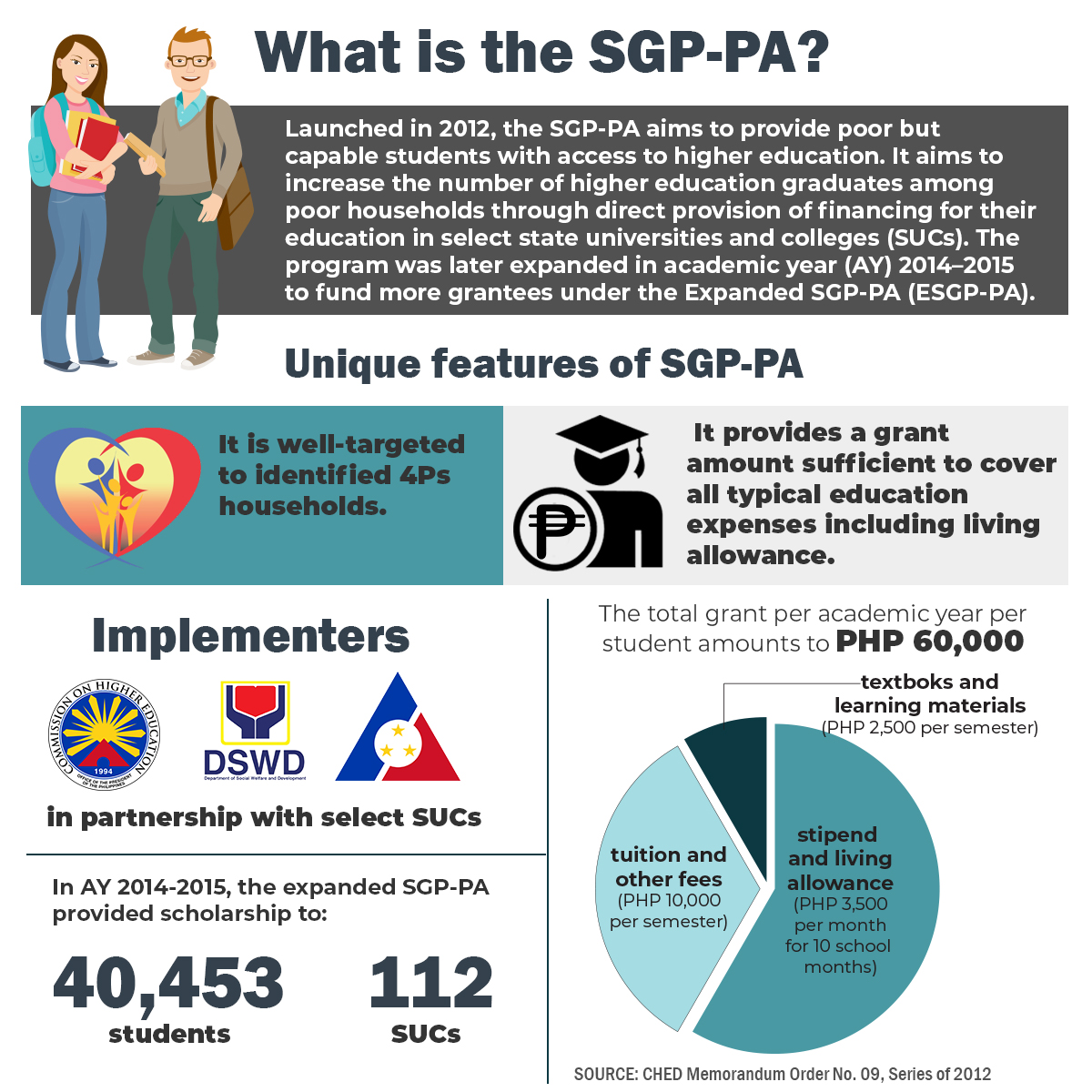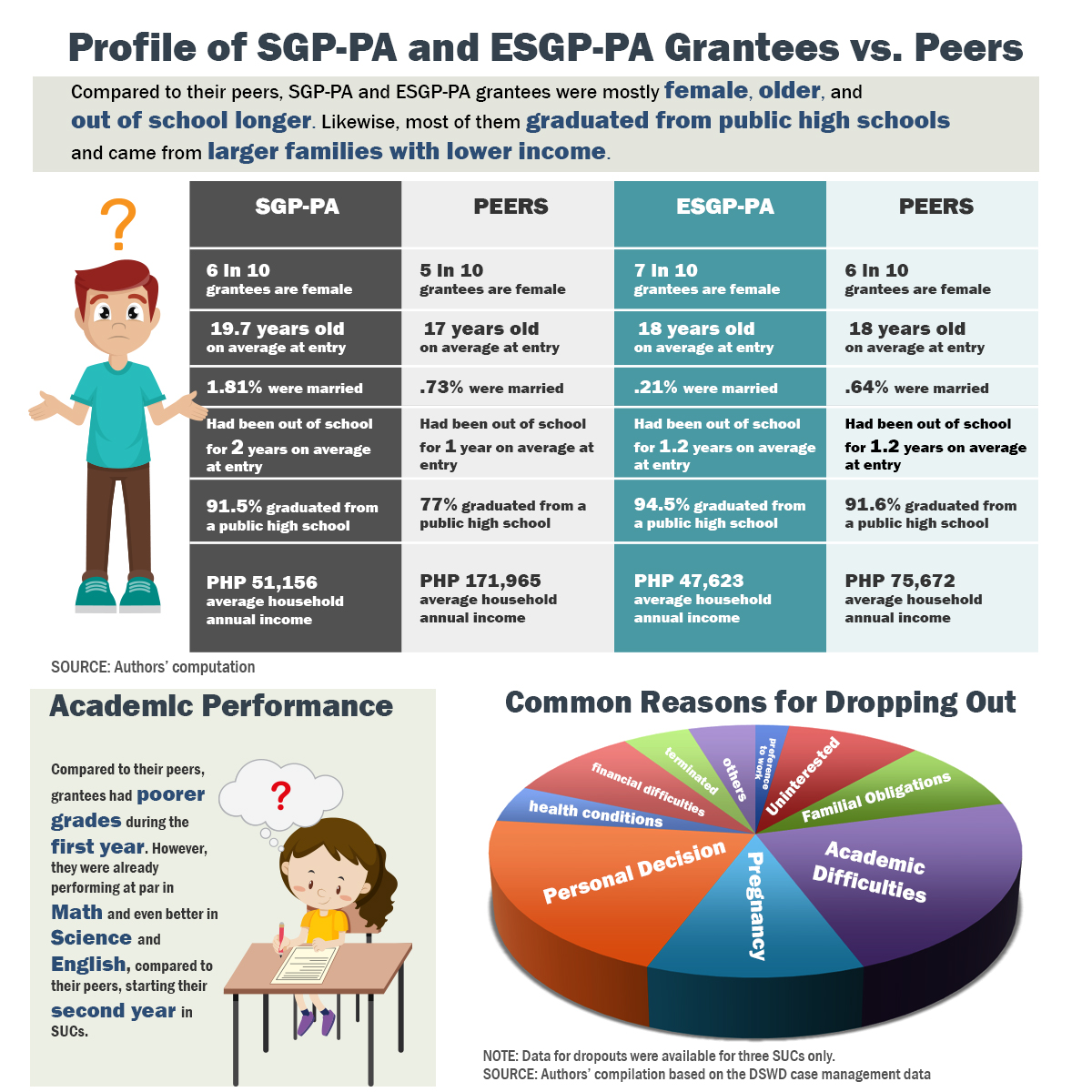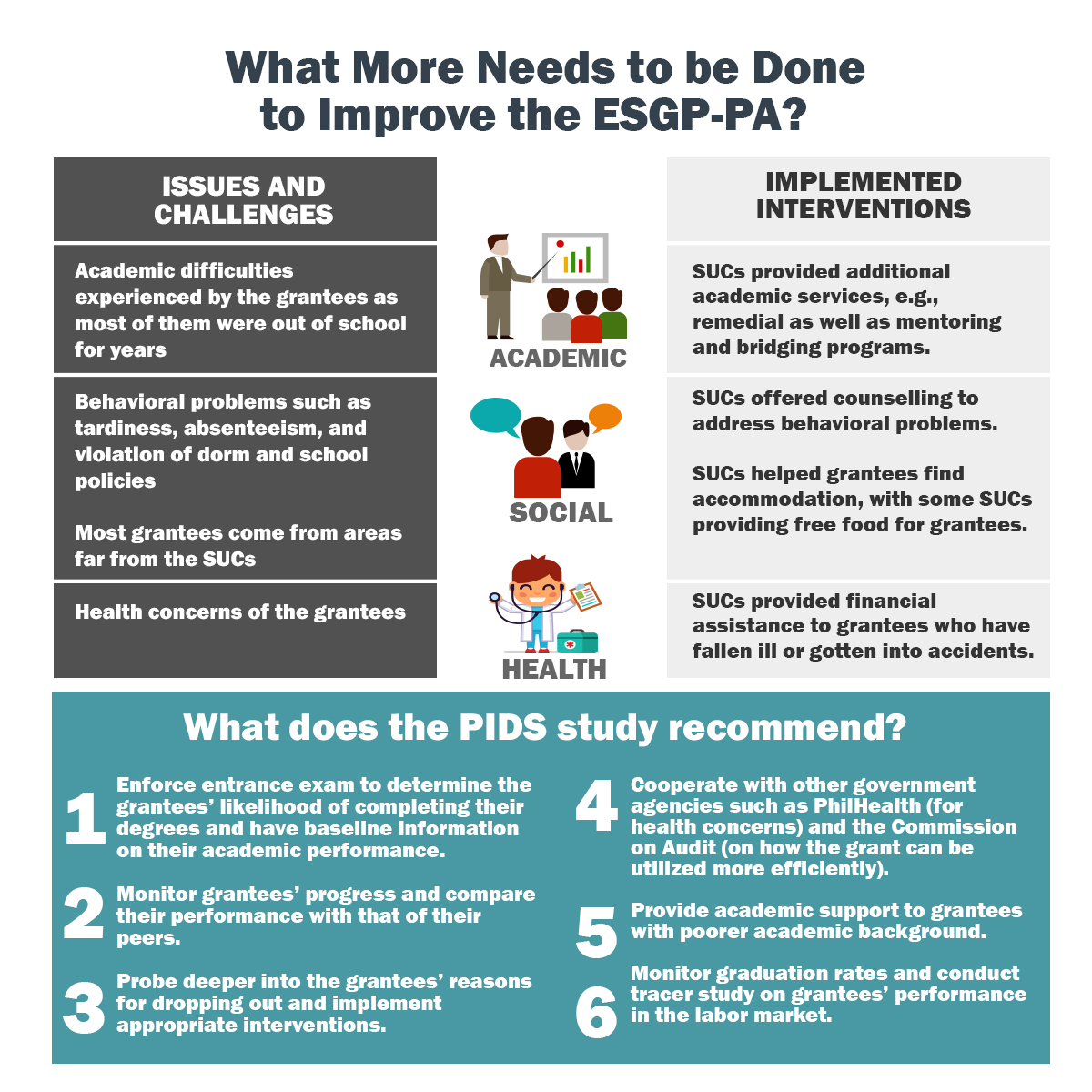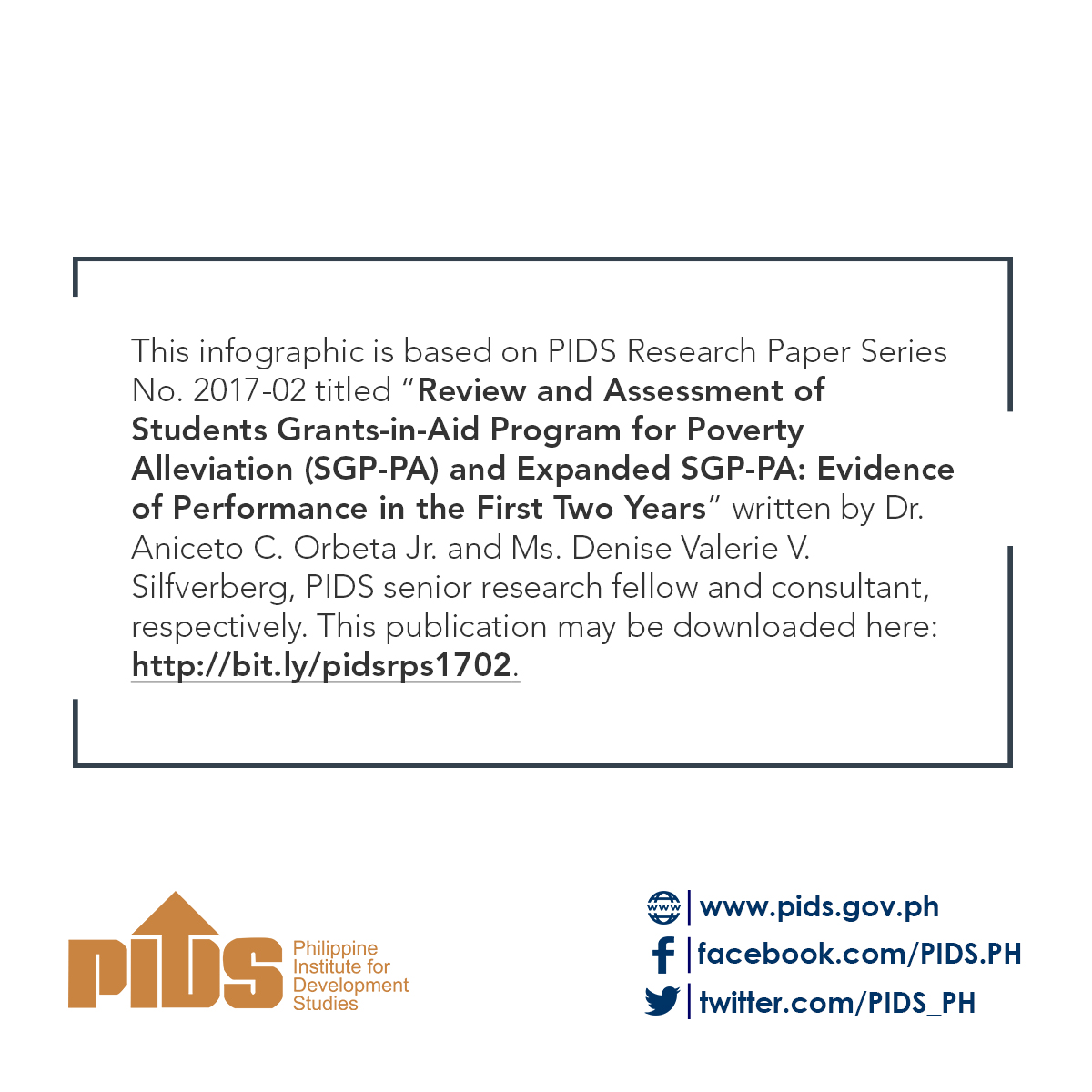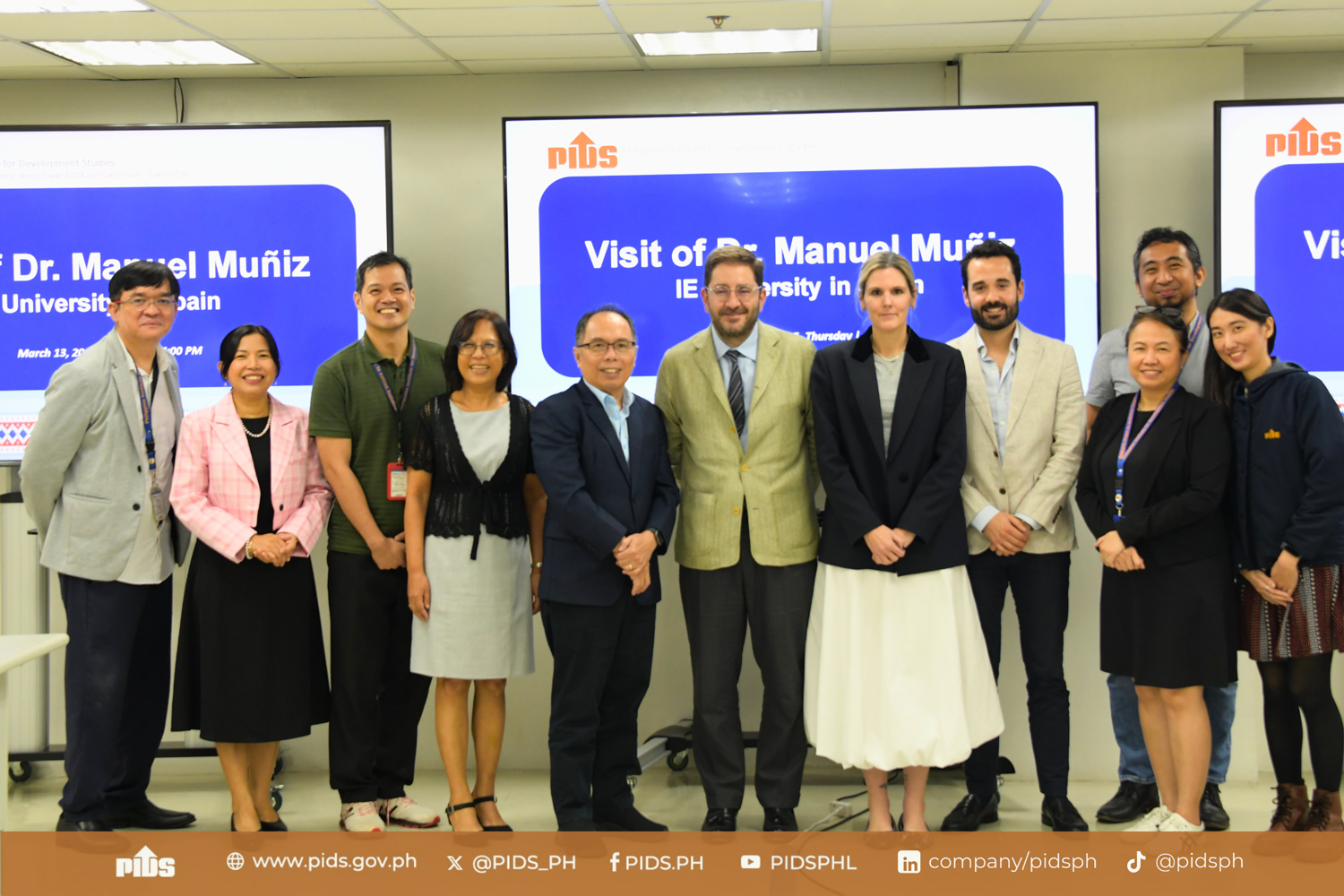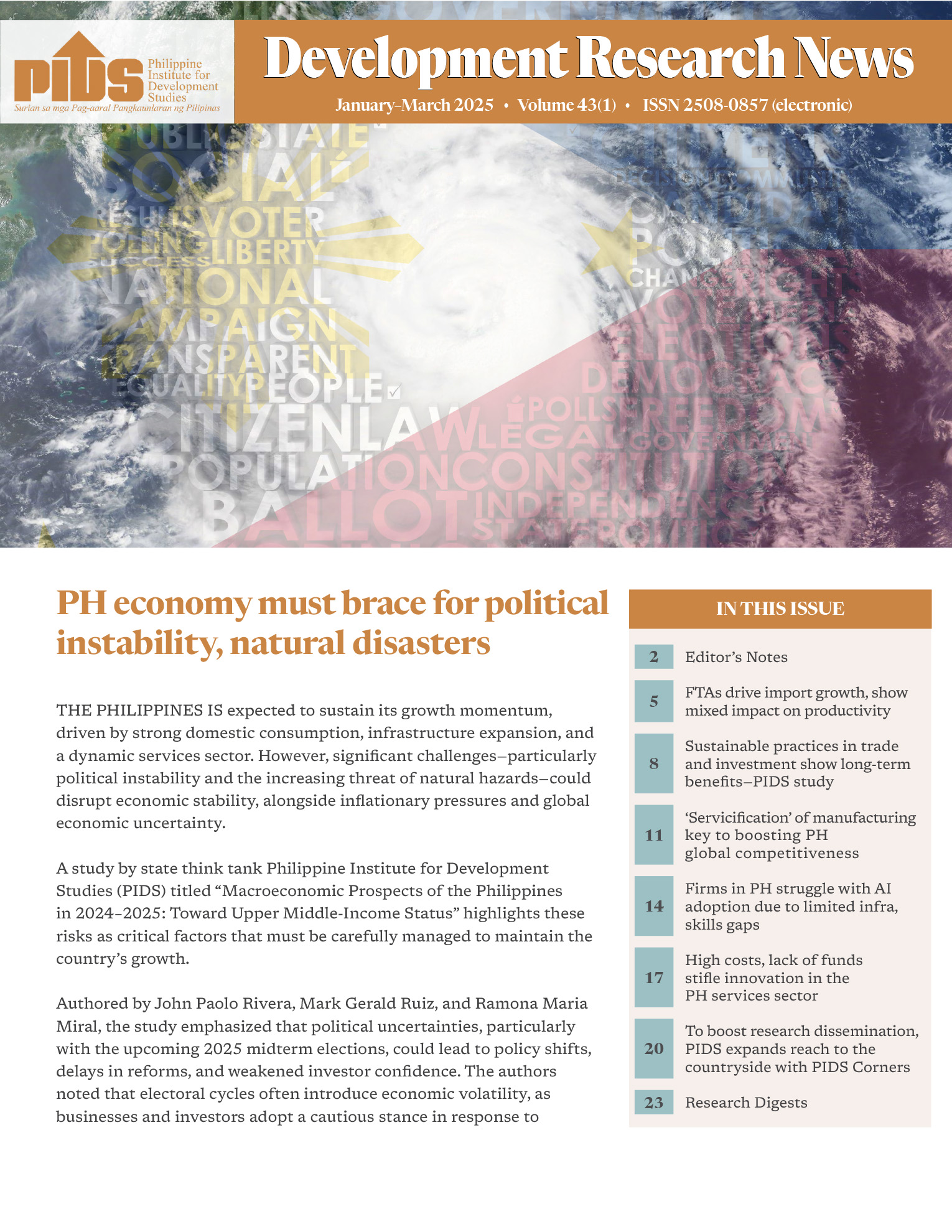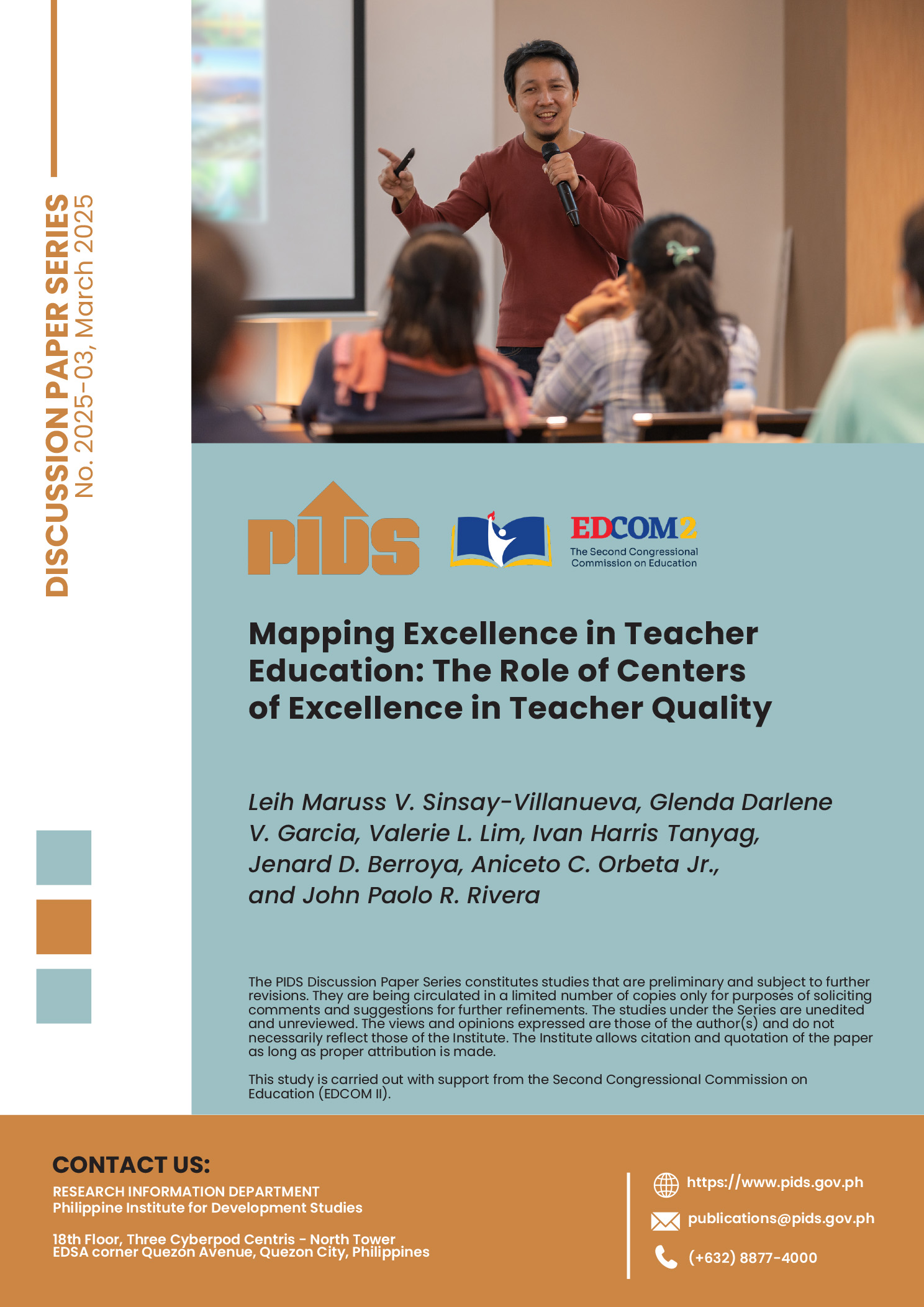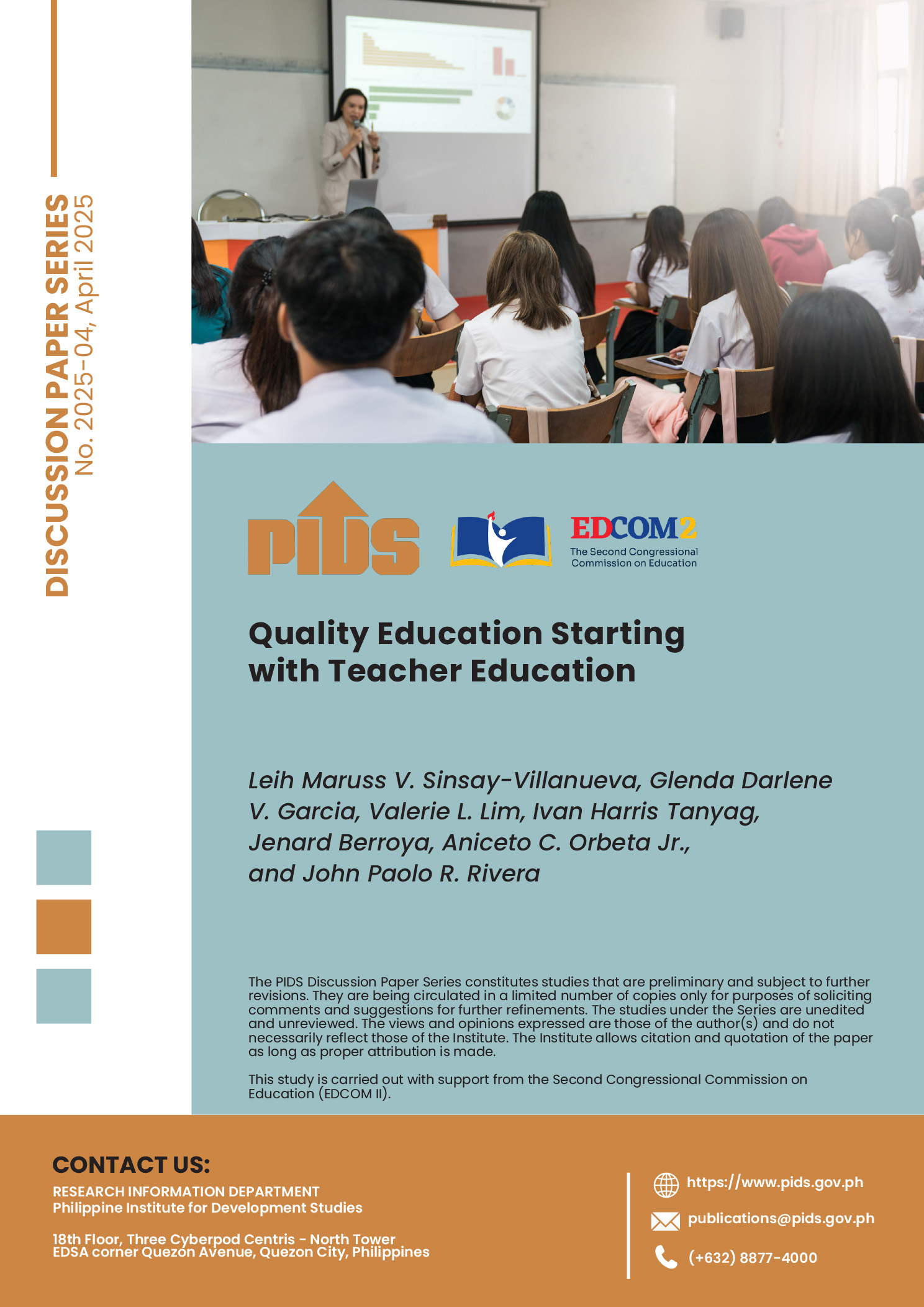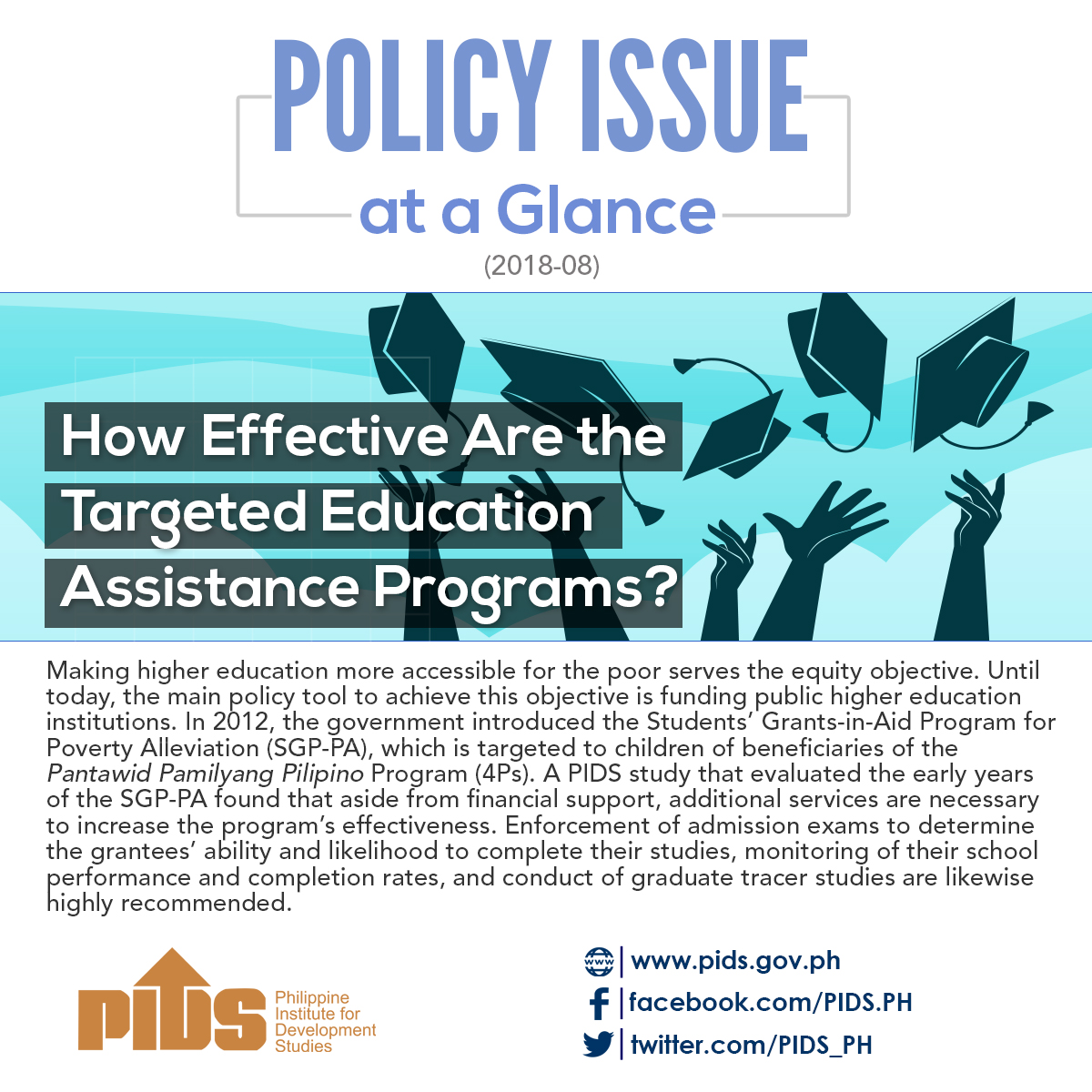
Making higher education more accessible for the poor serves the equity objective. Until today, the main policy tool to achieve this objective is funding public higher education institutions. In 2012, the government introduced the Students’ Grants-in-Aid Program for Poverty Alleviation (SGP-PA), which is targeted to children of beneficiaries of the Pantawid Pamilyang Pilipino Program (4Ps). A PIDS study that evaluated the early years of the SGP-PA found that aside from financial support, additional services are necessary to increase the program’s effectiveness. Enforcement of admission exams to determine the grantees’ ability and likelihood to complete their studies, monitoring of their school performance and completion rates, and conduct of graduate tracer studies are likewise highly recommended.
This infographic is based on PIDS Research Paper Series No. 2017-02 titled “Review and Assessment of Students Grants-in-Aid Program for Poverty Alleviation (SGP-PA) and Expanded SGP-PA: Evidence of Performance in the First Two Years” written by Dr. Aniceto C. Orbeta Jr. and Ms. Denise Valerie V. Silfverberg, PIDS senior research fellow and consultant, respectively.
This infographic is based on PIDS Research Paper Series No. 2017-02 titled “Review and Assessment of Students Grants-in-Aid Program for Poverty Alleviation (SGP-PA) and Expanded SGP-PA: Evidence of Performance in the First Two Years” written by Dr. Aniceto C. Orbeta Jr. and Ms. Denise Valerie V. Silfverberg, PIDS senior research fellow and consultant, respectively.
Gallery Images:

